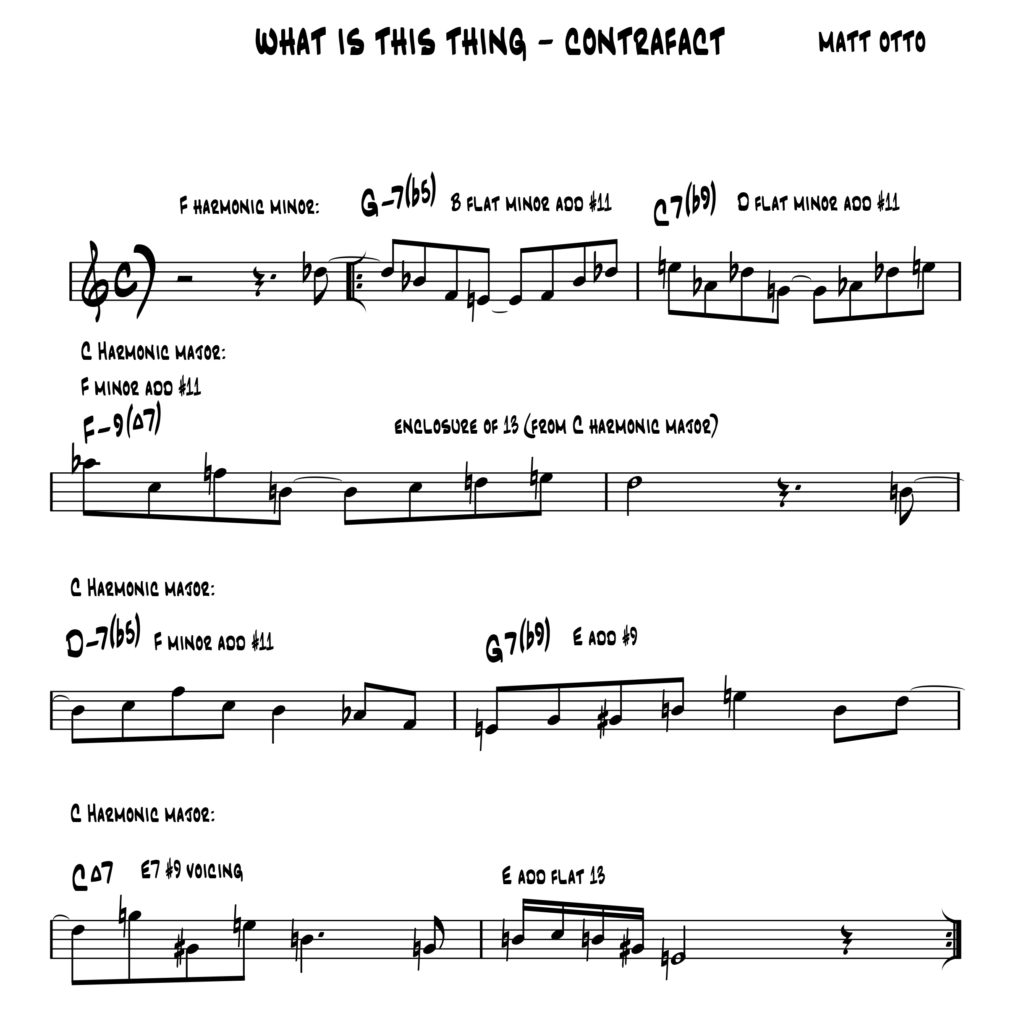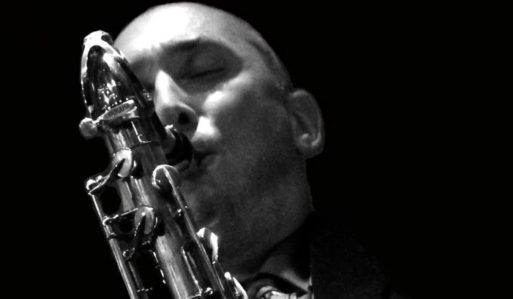I’ve been looking at using Modes of harmonic Major and harmonic minor over the chord progression “What is This Thing Called Love”. The first two chords (G half diminished and C7b9) could be thought of as coming from F harmonic minor (2nd mode and 5th mode). This is a common practice among Bach and some bebop players like Sonny Stitt in terms of the note choice found in their melodic phrases. Players are often hearing melodies in the moment and not “thinking” of scales but looking at melodic creation through the lens of note cells (7 note for example) can be a useful abstraction in an effort to discover more melodic possibilities and simplifying otherwise complex chord progressions.
The next group of chords, from bars 3 through 8 (F-7, D half diminished, G7b9 and C Maj7) could all possibly come from the C harmonic major scale (C,D,E,F,G,Ab,C) as each of those 7th chords can be found within that scale (4th mode, 2nd mode, 5th mode, 1st mode). Using this simplified theory I’ve been improving just using those two 7 note sets when playing over the progression. I’ve found this modal approach to be a creative limitation which has freed up my playing on the progression a bit and given me another way to think about this frequently played progression.
Here’s a short 8 bar melodic excerpt that embraces this concept and also distinguishes small subsets (4 note cells or tetrads) from the within the larger two scale. The 4 note subsets are a further restriction that can help lead to discovering some new melodic material within the over arching concept.
~ Enjoy!

